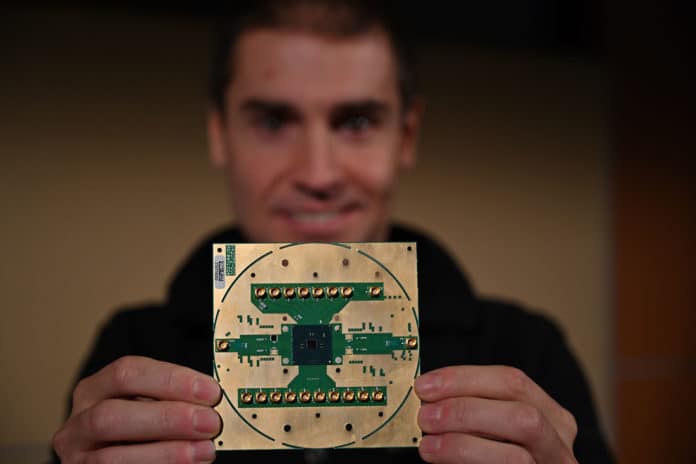After revealing it in December, during the 2020 International Solid-State Circuits Conference (ISSCC) in San Francisco, Intel has provided some technical details for its Horse Ridge, a processor for quantum computing systems.
It is developed in collaboration with QuTech – a partnership between TU Delft and TNO (Netherlands Organization for Applied Scientific Research). The system-on-chip is based on Intel’s 22nm FFL (FinFET Low Power) CMOS technology and is capable of controlling 128 qubits.
Functionally, it brings together the digital core, analog/RF circuits, and SRAM memory to use microwave pulses to manage and manipulate the status of qubits in a quantum computing system. The Horse Ridge chip is designed to reduce errors from “phase shift” in radio frequencies.
To reduce the phase shift, researchers have integrated four radio frequency channels into a single 4×4 mm device, each of which controls up to 32 qubits, using frequency multiplexing. That is a process of dividing bandwidth into frequency bands that do not overlap each other, and each carries a separate signal. That means that Horse Ridge can potentially control up to 128 qubits to help reduce the number of cables and rack instrumentations previously required.
Intel and QuTech explained that the four frequencies could be precisely adjusted to allow the quantum system to adapt and automatically correct for phase shift when controlling multiple qubits, thus improving fidelity.
Horse Ridge is designed to work with a wide range of frequencies to control both superconducting qubits (known as transmons) and spin qubits. The transmons usually operate between 6 GHz and 7 GHz, while the ‘spin qubits’ operate between 13 GHz and 20 GHz.
Horse Ridge can function at 3 Kelvin, or -270.15 degrees Celsius. That is still not sufficient for most qubit setups, which work in special refrigerators at a fraction above the absolute zero points of -273 degrees Celsius, or 0 Kelvin. This low temperature is needed to maintain the fragile state of qubits. It is expected that spin qubits can be maintained at temperatures as high as 1 kelvin (just above -458F).
Intel Horse Ridge is an important step towards the future implementation of quantum computing for commercial use.
